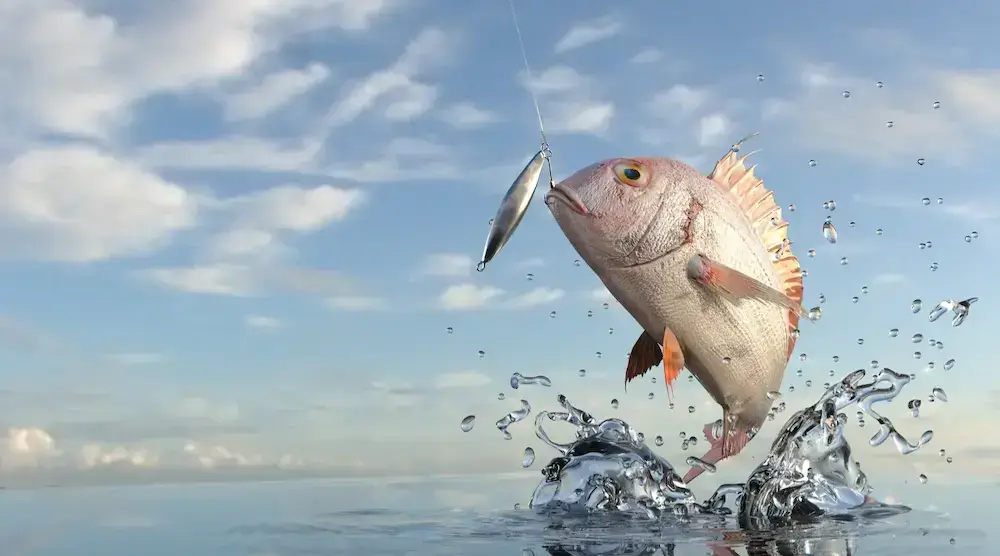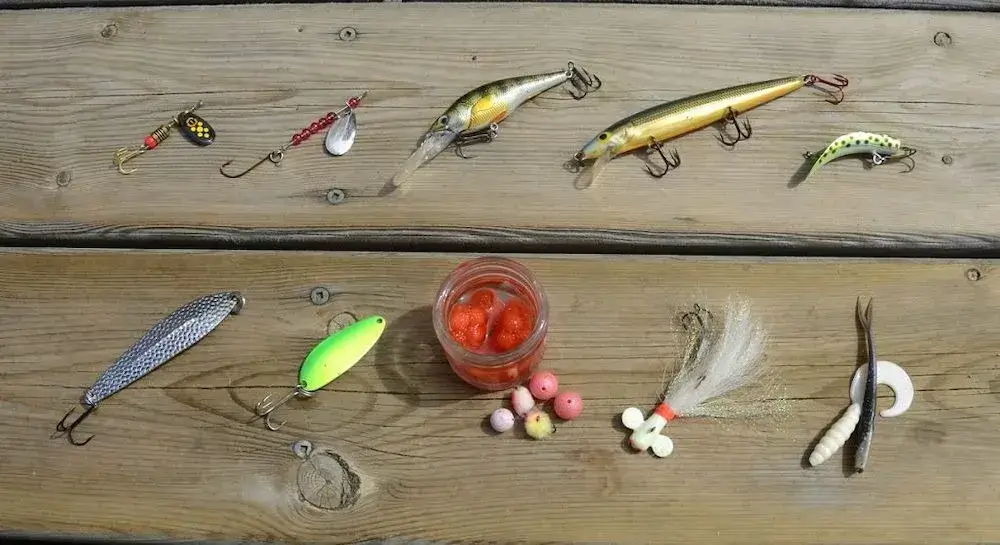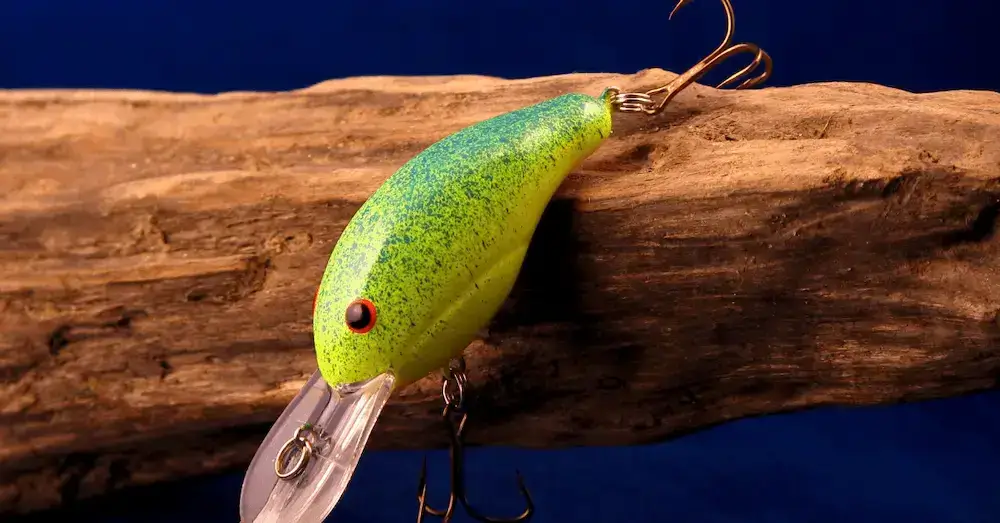It can be tough trying to decide what lure to use when fishing. It can be hard to know which one will work best in a particular situation with so many options available.
This blog post will provide tips that should help you increase your chances of success when fishing. We’ll also discuss the benefits of using different lures and offer some advice on choosing the right one for you.
What Type of Fishing Are You Doing Today

The type of fish you’re trying to catch will play a big role in what lure you should use. Are you fishing for bass? Trout? Salmon? Walleye? Each type of fish has different preferences for what they’ll bite on.
Here are a few general tips:
- If you’re fishing in murky water, use a bright-colored lure. Then, the fish will be able to see it better and be more attracted to it.
- If you’re fishing in clear water, use a more natural-looking lure. You don’t want to scare the fish away with something that looks artificial.
- Pay attention to the time of day. Some fish are more active in the morning, while others are more active at night.
- Use a lure that imitates the type of food that the fish you’re trying to catch likes to eat. Ask someone at your local bait shop if you’re unsure what kind of bait to use. They’ll be able to give you some good advice.
What Types of Lures Are Best for Certain Kinds of Fishing
Different fish react to different lures, so it’s important to know what kind of fish you’re targeting before choosing your lure.
Ask someone at the bait shop or another fisherman if you’re unsure. In general, there are a few different categories of lures:
- Jerkbaits
- Spoons
- Crankbaits
- Swimbaits
- Soft plastics
Jerkbaits are excellent for targeting bass, especially in the springtime. These lures imitate wounded baitfish, so they’re perfect for attracting predators.
Spoons are also good for bass, as well as trout and walleye. They’re easy to use and can be effective in various water conditions.
Crankbaits are another good choice for bass and pike, and muskie. These lures mimic the appearance and movement of small fish, so they’re sure to attract attention.
Swimbaits are yet another option for targeting bass. These lures simulate the motions of a swimming baitfish, making them irresistible to predators.
Finally, soft plastics are versatile lures that can be used for various fish, including bass, trout, and panfish. These lures come in various shapes and sizes, so you’re sure to find one that’s perfect for your needs.
No matter what kind of fish you’re targeting, a lure is perfect for the job.
How to Use Different Lures to Your Advantage

The vast array of lures available can be daunting if you’re new to fishing. How do you know which one to use? The good news is that there’s no need to invest in a huge tackle box full of different lures.
By understanding how fish behave and selecting the right lure for the conditions, you can catch fish using a few versatile lures.
Here are some tips to help you select the best lure for the job:
- Know your fish: Different fish species are attracted to different types of lures. Do some research on the type of fish you’re hoping to catch and choose a lure accordingly.
- Consider the conditions: The time of day, water clarity, and temperature can all affect which lure will be most effective.
- Be prepared to change lures: If you’re not getting bites, don’t be afraid to try a different lure. Sometimes, it takes a little experimentation to find what the fish are biting on.
- Have fun. Fishing is supposed to be enjoyable, so don’t get too stressed out if you’re not catching anything. The more you fish, the better you’ll become at choosing the right lure for the conditions.
By following these tips, you’ll be able to select the best lure for any fishing situation and increase your chances of success.
How to Choose the Right Bait for the Right Situation
Fishing is a fun and rewarding hobby, but it can be frustrating if you don’t catch anything. One of the most important things to consider when fishing is what bait to use.
The wrong bait can mean the difference between a great day on the water and coming home empty-handed.
Here are some tips to help you choose the right bait for the situation:
- Pay attention to the fish you’re trying to catch. Different fish like different types of bait. For example, bass prefers live minnows or worms, while panfish like insects or small pieces of food.
- Consider the time of day and season. Fish are more active in certain conditions, so your bait should be geared towards those conditions. For example, fish are often spawning in the springtime and looking for mates, so bright lures that imitate other fish are a good choice.
- Think about the water conditions. Clear water calls for more subtle baits, while murky water can mean that louder, brighter baits are necessary to attract attention.
- Location is also important. If you’re fishing in a pond, lake, or river, look for areas with lots of cover like weeds, logs, or rocks. These are places where fish will often hide and ambush their prey.
Now that you know some tips for choosing the right bait get out there and give it a try.
Remember, even the best fisherman have bad days, so don’t get discouraged if you don’t catch anything. Just keep trying, and you’ll eventually find the perfect bait for the situation.
What Color Should Your Lure Be
While there are many factors to consider when choosing a lure, color is one of the most important.
The color of your lure will determine how visible it is to fish and can also be a factor in attracting certain types of fish. So what color should you choose?
There are a few things to keep in mind when selecting the color of your lure. The first is the type of fish you’re trying to catch.
Certain fish are attracted to certain colors, so if you know what kind of fish you’re after, you can choose a lure color that will appeal to them.
For example, bass are often attracted to dark colors like black and blue, while trout tend to go for brighter colors like red and orange.
The second thing to consider is the visibility of your lure. If you’re fishing in murky water, you’ll want a bright-colored lure so that fish can see it.
On the other hand, if you’re fishing in clear water, you might want to go for a more subdued color so as not to scare the fish away.
Finally, consider the time of day you’re fishing. Different colors will be more visible at different times of the day. For example, bright colors are easier to see in the daytime, while dark colors are more visible at night.
How Does the Weather Conditions Affect Your Choice of Lure

The weather conditions can play a big role in what type of lure you use when fishing. For example, if the water is cold, you’ll want to use a slower-moving bait, so the fish have time to bite. In general, though, a few different types of lures work well in most weather conditions.
Spinnerbait is one type of lure that works well in many different types of weather. This lure has a metal blade that spins around, making it look like an injured fish to predators.
Spinnerbaits come in various colors and sizes, so you can experiment to see what works best in your particular fishing spot.
Another good all-weather lure is a plastic worm. These lures come in many different colors, sizes, and shapes, so you can find one that closely resembles the type of baitfish in your fishing area.
Plastic worms are also very versatile – you can fish them slow or fast, depending on the conditions.
No matter what type of lure you choose, always be sure to match it to the conditions and the type of fish you’re hoping to catch. Then, with a little trial and error, you’ll be sure to find a winning combination.
When Is the Best Time to Go Fishing in Your Area
Here are a few tips to help you determine the best time to go fishing in your area:
- Check the weather forecast for your area. The ideal time to go fishing is when the weather is stable.
- Consider the season. In general, fish are more active in the spring and fall when the water temperature is cooler.
- Pay attention to tides. Tides can have a big impact on fishing success. For example, fish are more likely to bite during the incoming tide.
- Check out the moon phases. Many anglers believe that fish are more active during certain moon phases.
- Talk to local experts. If you know an experienced fisherman, ask them for advice on when the best time to go fishing is in your area.
- Do some research online. Many resources can help you determine the best time to go fishing.
- Experiment. The best way to find out what works for you is to try different times and see what works best.
- Be flexible. Remember that fishing is a hobby, and the goal is to enjoy yourself. So if you don’t catch anything, don’t worry- you can always try another time again.
Final Thoughts
Fishing is a great way to relax and enjoy the outdoors. By following these tips, you can increase your chances of success and have a great time doing it.
Don’t forget to check the weather conditions and water temperature before heading out. These can play a big role in how successful your fishing trip will be.
And lastly, have fun! Fishing is supposed to be enjoyable, so make sure you take the time to enjoy it.
